This is it. ASUS has done something absolutely awesome with the gaming laptop and it comes in the form of the ROG Zephyrus. Named after the Greek god of the West Wind, its name alone should give you a hint about what makes this ultra-thin, ultra-powerful gaming laptop special.
Yep, it’s in its cooling.
We aren’t kidding when we say this beast is thin. Much like the Acer Predator Triton 700, this new ROG laptop packs an Intel Core i7-7700HQ processor, an NVIDIA GeForce GTX 1080, up to 24GB of DDR4 2400MHz memory and up to 1TB of PCIe SSD storage into a body that’s less than 2cm thick.
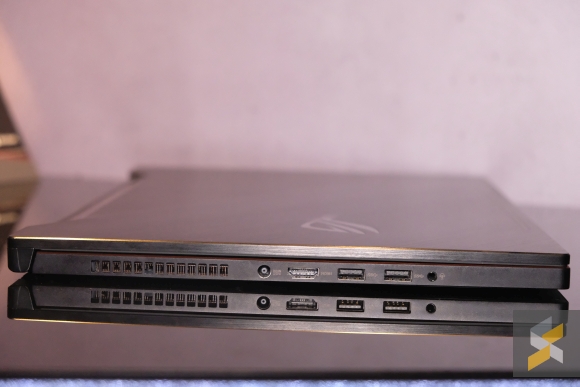
The only difference is that the Zephyrus is even thinner than the Triton 700 because it measures 17.9mm at its thick end and goes down to just 16.9mm at its thin end. It’s also really light, coming in at just 2.2kg. But how does it cool all its components, you must be wondering.
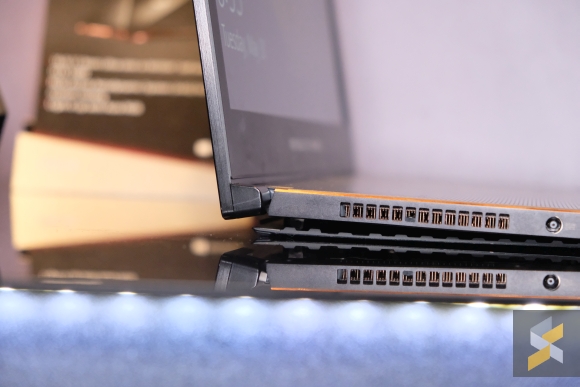
Well, ASUS has developed a special cooling mechanism that raises the laptop’s body away from its bottom panel when the screen is open, allow for more airflow (+20%) when you’re using it. Most might not even notice the lift because it’s rather slight, but if you pay attention you can definitely see the panel open up like the loading doors on a cargo airship.
It looks super sick.
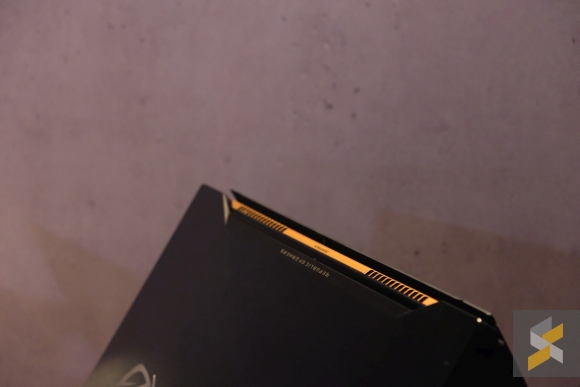
However, this pursuit of thinness and lightness does seem to have created some compromise. As portable as the Zephyrus is, it also feels far from the most robust laptop. In fact, apply even a moderate amount of pressure to the top panel and it begins to flex (especially towards the middle of the back). When the laptop is opened the bottom panel (that would be the “loading door”) also flexes quite a bit so I’m not sure how comfortable I would be using this laptop on my lap. The brushed metal does feel rather nice to the touch, however.

Other things I don’t like about the Zephyrus lies with its keyboard. The keys are super low-profile chiclet keys and feel a little too spongy to the touch. I’d even say that I prefer the feel of the Predator Triton 700’s keyboard to the one on the Zephyrus.

Unlike the Predator, though, the ROG Zephyrus opted for a side-mounted touch panel that also doubles as a touch-sensitive numpad that you can flip between at the touch of a button. It’s not super ideal, but it’s certainly more practical than having the touchpad above the keyboard.
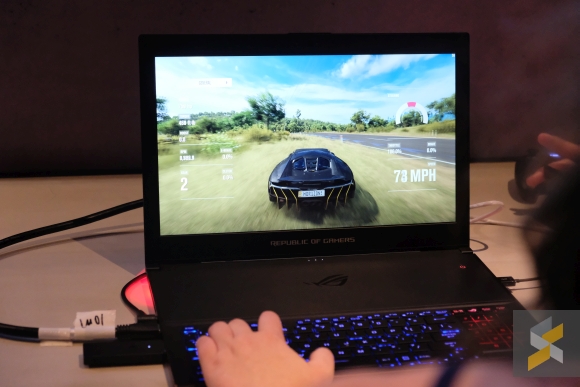
One other difference is that while Acer likes to display its fans in full glory with glass, the Zephyrus adopts a more muted design with the space above the keyboard, going for a plain cover that actually feels less garish than the glass so that gets a thumbs up from me.
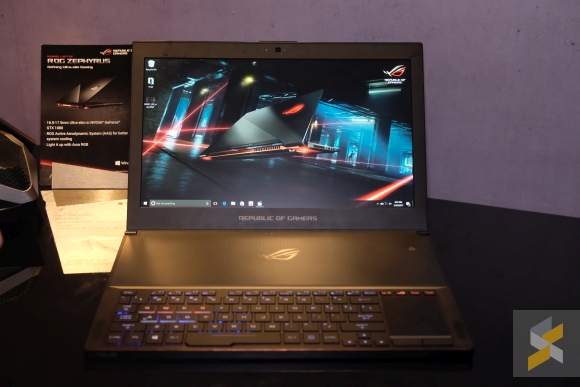
Right above that you’ll find the 15.6-inch Full HD display. It only pushes a resolution of 1920×1080, but it does have a fast 120Hz refresh rate, 100% coverage of the sRGB colour gamut and support for NVIDIA’s G-SYNC technology for reduced screen tearing.
Ports include a USB Type-C 3.1 Geb 2 with Thunderbolt 3 support, four USB 3.1 ports, one HDMI 2.0 port and a single headphone+microphone combo jack. The only thing I’d miss from this is an SD card reader.

I think the Zephyrus is definitely an incredibly interesting laptop. The way ASUS has decided to cool it certainly raised an eyebrow or two in what I think is the best way possible. I absolutely love the idea. How practical will it be in the real world? I don’t know but I’m excited to find out.
With the Zephyrus and Triton 700, this is the mark of a brand new revolution to make even the most powerful gaming laptops slim and light. That’s, of course, in part thanks to NVIDIA’s Max-Q technology that allows manufacturers to put desktop-class GPUs into super slim laptops.
At this point, it seems like it’s only a matter of time before the uber heavy and uber thick performance gaming laptops are a thing of the past. And I, for one, welcome our ultra-slim overlords.









